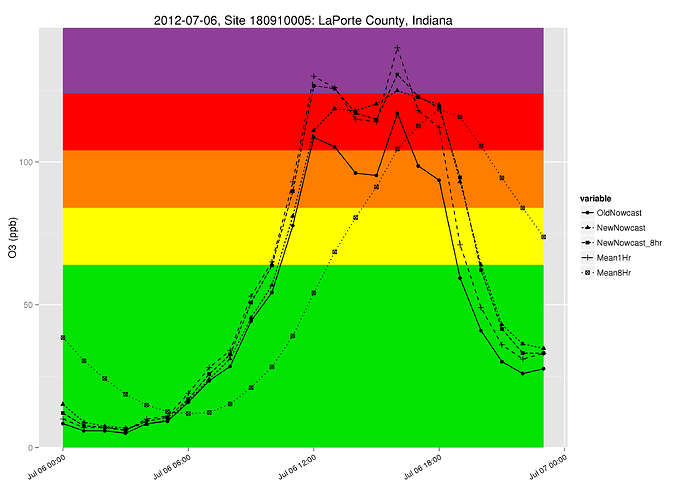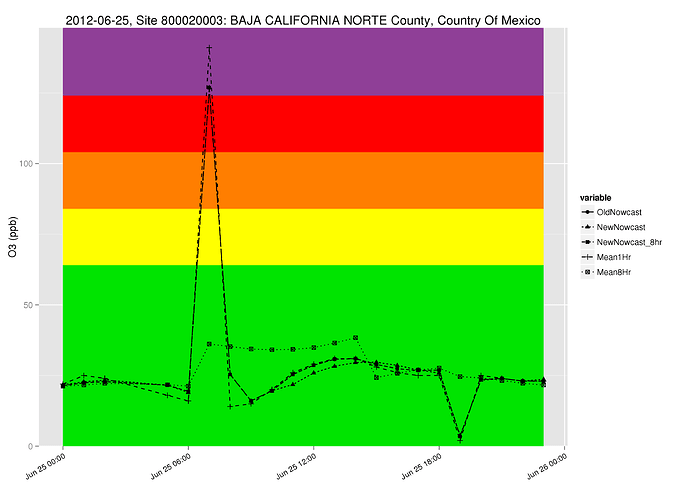Here are some plots for the new ozone NowCast:
- OldNowcast: Surrogate (slope/intercept) method used prior to the ozone NowCast
- NewNowcast: based on a 4-hour average Not used
- NewNowcast_8hr: based on an 8-hour average.This is the implemented NowCast
- Mean1Hr: 1-hour observations
- Mean8Hr: end 8-hour averages (e.g. for 12:00, the 8-hour average is from 5:00-12:00, not 12:00-19:00)



